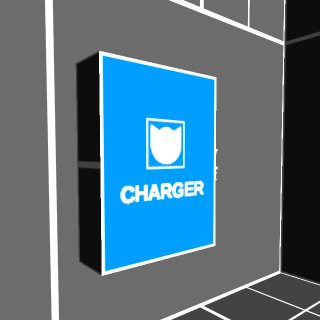 |
Nuclide
Software Development Kit for id Technology (BETA)
|
 |
Nuclide
Software Development Kit for id Technology (BETA)
|
Server-Entity: Armor Recharging Station.
QUAKED func_recharge (0 .5 .8) ?
Brush that fills up your armor when used, to a maximum of 100 points. Known as the "H.E.V. Charger", formerly known as the "Super Charger".

This entity was introduced in Half-Life (1998).

Public Member Functions | |
| void | func_recharge (void) |
| virtual void | Save (float) |
| Handles saving a copy of this entity to a given filehandle. | |
| virtual void | Restore (string, string) |
| Similar to ncIO::SpawnKey() but for save-game fields. | |
| virtual void | SpawnKey (string, string) |
| This method handles entity key/value pairs on map load. | |
| virtual void | Precache (void) |
| virtual void | Respawn (void) |
| Server: Called when the entity first spawns or when game-logic requests the entity to return to its original spawn state. | |
| virtual void | customphysics (void) |
| virtual void | OnPlayerUse (void) |
| nonvirtual void | ResetHealth (void) |
| nonvirtual void | SetChargerCapacity (float) |
| nonvirtual float | GetChargerCapacity (void) |
| void func_recharge::func_recharge | ( | void | ) |
|
virtual |
| float func_recharge::GetChargerCapacity | ( | void | ) |
|
virtual |
|
virtual |
Reimplemented from ncEntity.
| void func_recharge::ResetHealth | ( | void | ) |
|
virtual |
Server: Called when the entity first spawns or when game-logic requests the entity to return to its original spawn state.
Reimplemented from ncRenderableEntity.
|
virtual |
Similar to ncIO::SpawnKey() but for save-game fields.
Whatever you write into file handles within your ncIO::Save() method needs to be read back in here.
Reimplemented from ncRenderableEntity.
|
virtual |
Handles saving a copy of this entity to a given filehandle.
Within you want to use the ncIO::SaveFloat() etc. methods to write the internal member attributes to the specified file handle.
Reimplemented from ncRenderableEntity.
| void func_recharge::SetChargerCapacity | ( | float | newCapacity | ) |
|
virtual |
This method handles entity key/value pairs on map load.
You can easily convert the strValue parameter using the ReadFloat etc. methods that are part of ncIO.
Reimplemented from ncRenderableEntity.